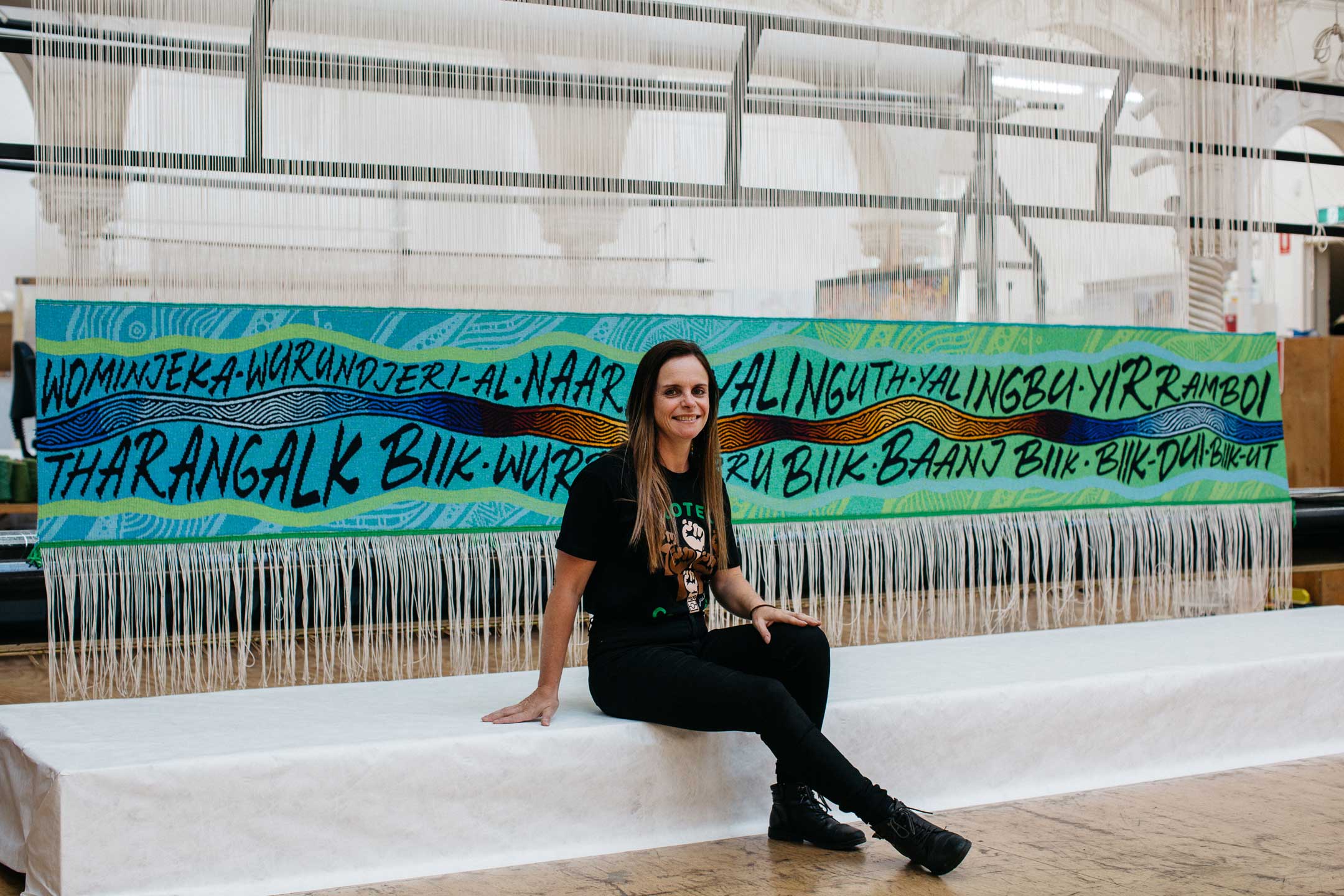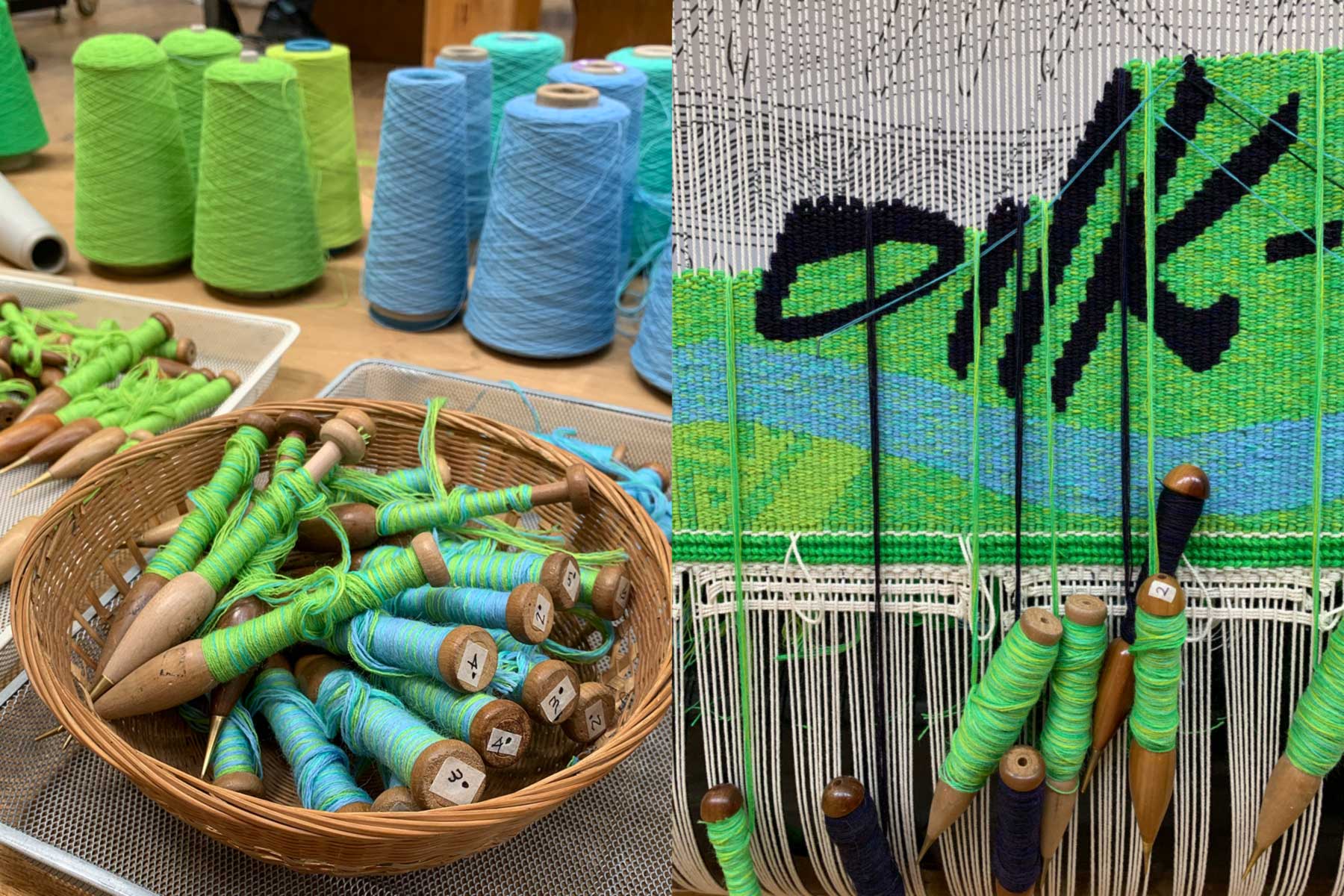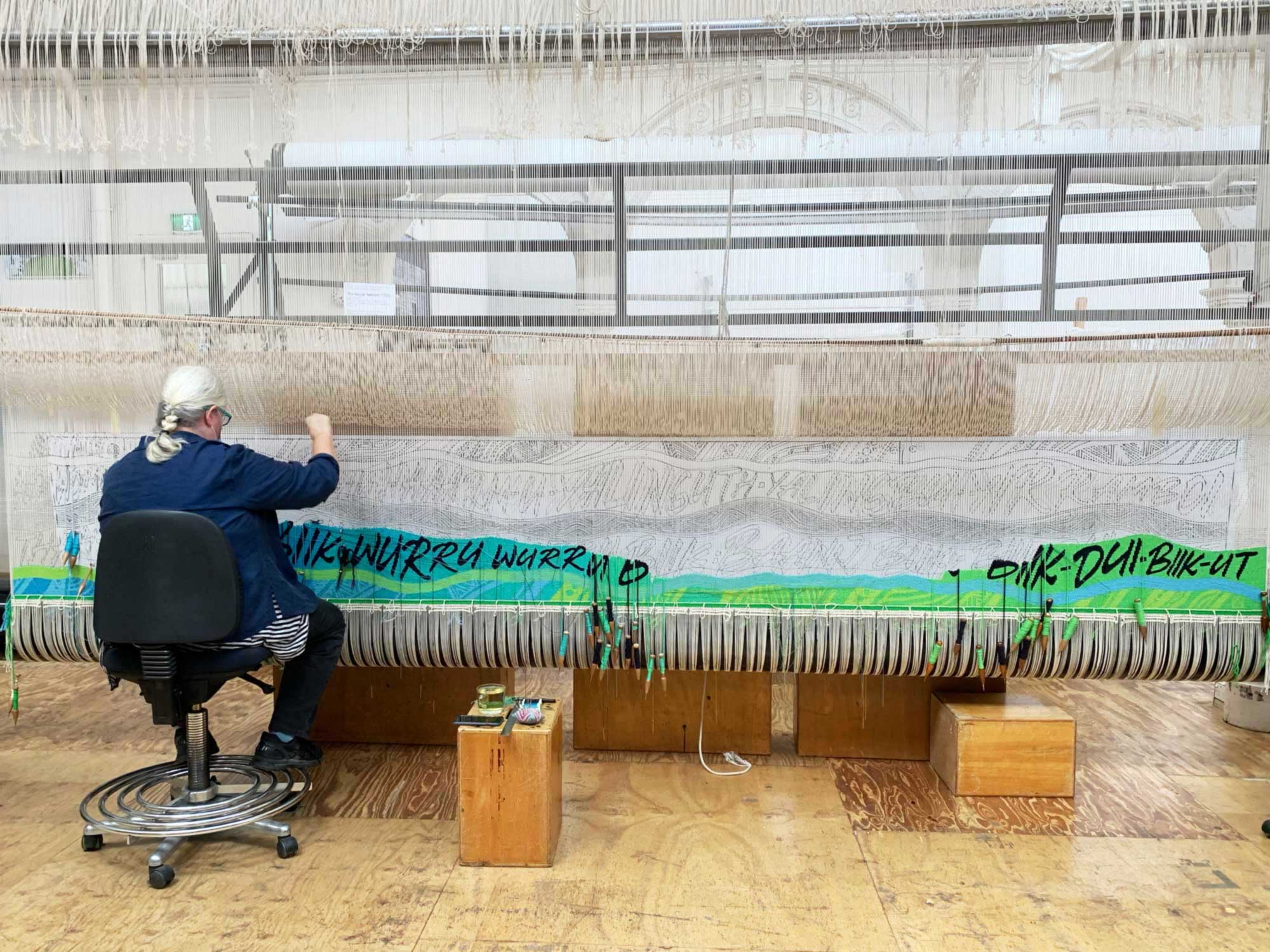



In late 2020 the ATW completed the ‘Wurundjeri Biik, yalinguth, yalingbu, yirramboi’ (Wurundjeri Country, yesterday, today, tomorrow) tapestry designed by Wurundjeri-willam (Wurundjeri-baluk patriline) artist Mandy Nicholson. Commissioned by the City of Melbourne, the tapestry has been designed to welcome visitors to a new meeting space at Melbourne Town Hall. The tapestry was cut from the loom in December 2020 by Lord Mayor of the City of Melbourne Sally Capp and Mandy Nicholson.
Nicholson's vibrant tapestry design is informed by her work translating and reviving indigenous languages, with a focus on her mother tongue, Woiwurrung. Traditional motifs of south-eastern Australia, blended with Nicholson's contemporary interpretation, form the banks of a river. The river represents the veins that keeps Country alive. This notion is underpinned through language; Wominjeka Wurundjeri-al - Naarm-u - Yalinguth - Yalingbu - Yirramboi - Tharangalk biik - Wurru wurru biik - Baanj biik - Biik dui - Biik-ut.
The text references Nicholson's navigation of spiritual connections to Country, while living in the city, which, is often misconceived as less authentic. The artist says of her experiences “I don't see the buildings of concrete, I see what's beneath, I see the layers of Wurundjeri Country that form part of both my physical and spiritual body.”(1) Tharangalk biik - Wurru wurru biik - Baanj biik - Biik dui - Biik-ut are some of the interconnecting layers of Wurundjeri Country:
“Tharangalk Biik: (Bunjils' home): Meaning the Forest Country above the clouds, a reflection of what is below. This statement shows that all layers are connected and if flipped are the same.
Wurru Wurru Biik (Sky Country): Is where we see the physical forms of our Creation Beings like Bunjil and Waa that watch over us.
Baanj Biik (Water Country): Is where life is sustained, represents cultural survival and renewal.
Biik-dui (On Country): Is where the plants grow that we utilise for food or implements, it is where we walk, dance and perform ceremony;
Biik-ut (Below Country): Is where we collect ochre to paint our bodies for ceremony and dance, it is also where the roots of plants bind it together.”(2)
Nicholson's bold and graphic design led ATW weavers Chris Cochius, Amy Cornall and Cheryl Thornton to set each mixed weft bobbin before commencing the tapestry. The weavers explored the design through multiple tapestry samples to investigate the subtle tonal shifts found in the design's undulating gradients. The text, woven in mixed threads of blue, black, red and brown, is set against a palette of vibrating green and blue, with subtle purple and ochre tones, including a new green created by ATW's specialist dyer Tony Stefanovski. Woven without a hem, the very long (4.32 m), but narrow (0.58m) tapestry design has enabled weavers to work at safe distances from each other during the COVID19 pandemic.
Since 2005 work by urban-based First Nations artists has been a collecting priority for the City of Melbourne’s Acquisitions Panel, which had also been interested in commissioning a tapestry. The opportunity for Nicholson to design a tapestry, for the ATW to weave, provided the perfect occasion to bring these interests together, resulting in this beautiful and meaningful acknowledgement of country.
Nicholson is an artist and Traditional Custodian of Melbourne and its surrounds. Nicholson completed an Honours degree with Monash University in 2011, majoring in Aboriginal archaeology and minoring in geology. She has worked in the Aboriginal (Wurundjeri-specific) fields of art, culture, song, and language for over twenty years. She has managed the Djirri Djirri Dance Group for five years, which teaches leadership skills to young Wurundjeri girls through dance and song creation. Her most recent role was as project officer at the Victorian Aboriginal Corporation for Languages (VACL) for five years. Mandy’s heritage is Wurundjeri, Dja Dja wurrung and Ngurai-illum wurrung (all Victorian) on her father’s side, and German on her mother’s. Mandy is currently a PhD candidate researching how the Gunditjmara people from Western Victoria connect to their Country when they don’t live on Country.
References cited: 1, 2: Nicholson, M, (2018) ‘Mandy Nicholson (Wurundjeri, Dja Dja Wurrung and Ngurai Illam Wurrung)’, https://www.deadlystory.com/page/culture/my-stories/NAIDOC-week/Mandy_Nicholson, accessed 14 August 2020.